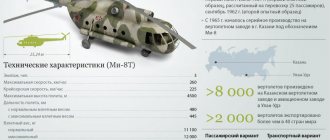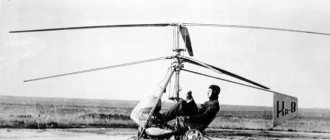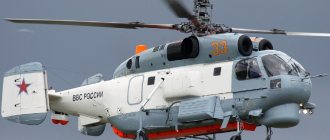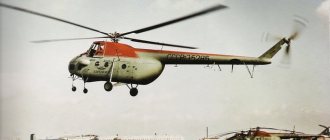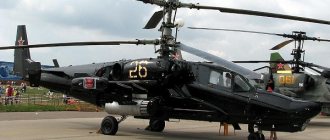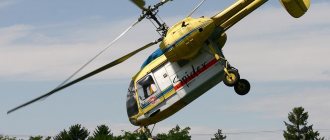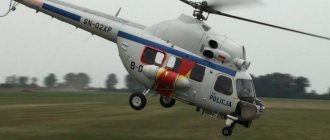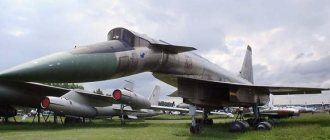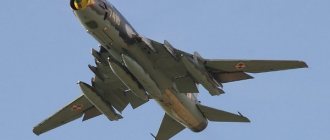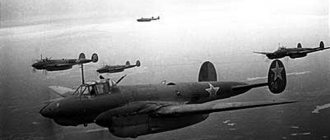History of creation
The year 1983 will be remembered at the Kamov Design Bureau for a long time; it was this year that the designers began to develop a helicopter design with one main rotor, unusual for the Kamov team, abandoning the traditional coaxial layout. This scheme, according to the developers, allowed the transport helicopter to achieve the highest cruising speed.
Ka 60
By that time, there was no vehicle with a payload capacity of 2–2.5 tons, the Mi-4 was removed from service, and the Mi-8 was not entirely cost-effective with its large load. The Ka-60 was supposed to be a reliable replacement for the piston “four”. Development was carried out on a deck version and a version of a reconnaissance helicopter and target designator.
Work on the Ka-60 revived only in the late 90s; in 1998, on December 10, the first prototype was tested in the air. The second prototype of the helicopter, as a training machine for training and retraining of flight personnel, was designated Ka-60U and first took to the skies on September 21, 2007. After an unsuccessful emergency landing of the second prototype on June 23, 2010, the project for the military version of the Ka-60 was frozen.
The Kasatka was very useful for delivering armed paratroopers, ammunition and weapons to forward positions, transporting the wounded, performing search and patrol operations and training and maintaining the skills of pilots.
Options [edit]
Glass cockpit Ka-62 Ka-60 Basic multi-role model. Ka-60U Training version. Ka-60K Marine version. Ka-60R Reconnaissance version. Ka-62 New version for the civilian market. It has a redesigned fuselage with more composites, a larger cabin than earlier demonstrators and will be powered by Turbomeca Ardiden 3G engines. [8] Ka-64 Sky Horse Export version, certified to Western standards, powered by two General Electric T700/CT7 turboshaft engines and a five-bladed main rotor.
Description of the Ka-60 helicopter
The new multi-purpose machine Ka-60 is the first helicopter created according to a design with one main rotor and an eleven-bladed tail rotor, enclosed in a ring on the fin of the tail. Both gearboxes - for the main and tail rotors - were manufactured at the Voronezh Design Bureau "Motorostroenie". The vehicle is equipped with a power plant of two RD-600V engines, which were originally intended for the Ka-60 and have a power of 1500 hp. on takeoff mode each.
Cabin of the Ka-60 helicopter
The new car can be controlled either from the left or right pilot’s seat; the location of the information displays allows this. The glass cockpit provides good visibility, and modern avionics provides the pilot with all the information about the spatial position of the machine, the navigation situation and the operation of the power plant and helicopter systems.
The designers took serious care of the survivability of the machine, so most of the most important systems and assemblies of the helicopter are duplicated and placed on different sides of the fuselage. All components and control parts, as well as the transmission, are capable of withstanding a 12.7 mm projectile. Each part of the main rotor, when shot through and holes are formed, does not lose the ability to create lift to further continue the flight.
The helicopter's stealth is facilitated by a special special coating of the fuselage and the use of selected rotor speeds to create suitable low noise levels. A specially designed landing gear allows landing with high vertical speed, and energy-absorbing pilot seats can withstand such overloads. Ka-60 gear is retractable in flight, which reduces air flow resistance and increases flight speed.
Ka 60
The use of 60% composite materials in the design of the machine, coupled with excellent aerodynamic qualities and sufficient thrust-to-weight ratio of the power plant, allows the helicopter to reach speeds of more than 300 km/h and a ceiling exceeding 5 thousand meters.
Since 1981, by the Decision of the Commission of the Presidium of the Council of Ministers of the USSR on Military-Industrial Issues No. 280, work began on the creation of a helicopter with the code B-60 (later - Ka-60).
The appearance of the helicopter according to the mentioned Decision was formed in accordance with the Technical Specifications of the Ministry of Defense as a new component unit created at that time in the structure of army aviation to provide instrumental reconnaissance, target designation and relay of official tactical information. The size of the helicopter was limited to a take-off weight of 2.2÷2.5 tons.
Work on shaping the appearance of the B-60 helicopter was deployed in a wide range of works for the intended use of the helicopter, both in the interests of army aviation and the Navy.
The variety of intended uses of the B-60 helicopter determined its design and layout configuration. The helicopter was developed according to a coaxial rotor design, allowing the airframe to be optimized both for solving the problems of army aviation and the Navy, taking into account the experience of the Design Bureau in terms of autonomous basing and operation of helicopters on small-tonnage naval ships (Fig. 1).
Rice. 1 Helicopter B-60 (project 1982)
In accordance with the tactical and technical specifications (TTZ), the B-60 helicopter was equipped with one TV-0-100 gas turbine engine from the Omsk Engine Design Bureau (OMKB) with a take-off power of 690 hp.
The management of the work on the B-60 helicopter was entrusted to the deputy chief designer of the Design Bureau named after. N.I. Kamova Krygina V.G.
As a result of the work, a technical design was completed and a full-scale model of the helicopter was built, on which the scope of operational and technological work required within the project was tested.
The helicopter cabin in the transport modification could accommodate up to 6 people, including the pilot, with the special equipment required by the modification conditions.
To solve the problems of reconnaissance and target designation by the team of authors of the Design Bureau Gubarev B.A., Mikheev S.V. and Vagis V.P. a technical solution was developed for a control system for a coaxial rotor, which ensured the installation of an electro-optical or radar module above the system of coaxial rotors, which made it possible to provide a circular panorama and preserve the habitable volume of the cabin without changing the basic design of the fuselage (a.s. No. 1064596, later replaced by RU patent No. 2263607).
However, changing requirements for army aviation, which at that time was only in its infancy, did not allow this project to become a reality.
And already in 1984, by the Decree of the Central Committee of the CPSU and the Council of Ministers of the USSR for
No. 816-177 OKB im. N.I. Kamov was given the task of developing a new army multi-purpose helicopter under the same code B-60.
The tactical and technical specifications for the B-60 helicopter, in addition to reconnaissance and target designation tasks, prescribed the functions of combating armored vehicles, suppressing fortified firing points, as well as the ability to deliver or evacuate reconnaissance and sabotage groups of 4-5 people.
At the same time, the helicopter had to have high flight performance characteristics with priority for speed parameters up to 300÷320 km/h.
To ensure the assigned tasks, the helicopter was already equipped with two TV-0-100 gas turbine engines of the same OMKB and the take-off weight of the helicopter varied between 4000÷4500 kg.
Solving the task at OKB im. N.I. Kamov understood the difficulty of creating such a helicopter due to the inconsistency of certain provisions of its technical specifications. Therefore, when shaping the appearance of the helicopter and, in particular, its load-bearing system, the design bureau was no longer limited to only the coaxial design of the rotors, but considered the variety of load-bearing designs of the helicopter as a tool for optimizing the solution of the tasks set in the specifications.
Three helicopter configurations were studied at once:
● helicopter with coaxial rotors;
● a helicopter with a single main rotor and a jet device for torque compensation and heading control;
● a helicopter with a single main rotor and a tail rotor in the annular channel of the vertical tail.
The work was carried out in a wide range of different research areas, ranging from conceptual, coupled with in-depth engineering analysis of the specified helicopter configurations, and experimental work in wind tunnels and on a flying laboratory.
The leading designers of these works at different periods of time were: V.V. Kolganov. , Kostyuk V.D., Furman V.A.
Each helicopter configuration was assessed at the level of in-depth development of the preliminary design, and design solutions for units and systems were worked out on full-scale mock-ups.
The aerodynamic layout of the airframe and elements of the helicopter's load-bearing system were tested in the wind tunnels of TsAGI, and on problematic issues of aerodynamics and the dynamics of helicopter behavior in flight, work was carried out in a flying laboratory.
By this period (1984÷1985), the N.I. Kamov Design Bureau had already accumulated experience in creating the highly maneuverable high-speed combat helicopter Ka-50, which showed that the implementation of the requirements specified in the TTZ for advancing the speed of a multi-purpose reconnaissance and combat helicopter helicopter B-60 in a coaxial rotor configuration is achievable. In this case, a comprehensive solution is needed for the aerodynamic and energy parameters of the helicopter and its supporting system, aimed at significantly reducing the drag of the fuselage, the profile and inductive drag of the blades and increasing the power supply of the helicopter, providing high specific loads on the swept area of the rotor.
In this regard, a large amount of work has been carried out to achieve low drag characteristics (CxS) of the helicopter. The work included both the formation of the appropriate aerodynamic contours of the fuselage and the aerodynamic cowling of the coaxial rotor units (Fig. 2). It should be noted that the mentioned technical solution for cowling coaxial rotor units was far ahead in this regard of the technical solution used by Sikorsky Aircraft Corporation on the experimental Sikorsky X2 helicopter (US patent 8303208).
Fig.2 B-60 helicopter in a coaxial rotor configuration (project 1985) 1 - aerodynamic cowling of the coaxial rotor units.
According to the results of aerodynamic tests in TsAGI pipes, the CxS value of the helicopter was achieved within the range of 1.2÷1.5 m2. However, the restrictions on the take-off weight of the helicopter specified in the TTZ did not allow, with the existing type of domestic engines at that time, to provide a power ratio of more than 0.3÷0.35 hp/kg (on the Ka-50 helicopter the power ratio was more than 0.45 liters. s./kg). In addition, the low CxS values achieved in model experiments on real objects, as experience shows, have a steady tendency towards their increase. At the same time, the solution to the aerodynamic cowling of the coaxial rotor units in the traditional version of this project was also considered a problematic technical solution in this project.
Therefore, the parallel work carried out at the OKB on a helicopter with a single main rotor and a jet torque compensation device was intensified, and their authorization was supported by the Resolution of the CPSU Central Committee and the Council of Ministers of the USSR No. 741-208, which had been issued by that time (1986).
In accordance with the updated TTZ, the above-mentioned helicopter configuration was supposed to be equipped with a power plant with two TV-0-100M gas turbine engines of increased power up to 830 hp. each, and the take-off weight of the helicopter was no longer limited to 4000÷4500 kg. (later it was planned to install two TV-0-200 engines of 1600 hp each).
In the process of working on the project in the period 1986-1987, a full-scale model of the B-60 helicopter was built (Fig. 3), during the work on which, for the first time in the domestic helicopter industry, the concept of crash resistance of the fuselage structure was incorporated into the development of a helicopter airframe and systems were introduced to ensure crew survivability in conditions of emergency helicopter landings.
Fig.3 Model of the B-60 helicopter (project 1987)
The management of the work on the construction of the model was entrusted to the deputy head of the technical projects department of the Design Bureau Gubarev B.A. (in the center).
The saturation of the cockpit with equipment in accordance with ensuring the implementation of technical specifications, in which electronic display devices that had appeared by that time were widely used, required a new approach to the organization of crew jobs in the cockpit, based on in-depth ergonomic research.
Together with the Institute of Aviation Equipment and the Institute of Aviation and Space Medicine, a wide range of work is being carried out on the ergonomic validity of crew workplaces. In the process of this work, industry standards are adjusted to the requirements for the size of helicopter cabins (OST 104019-83) and the placement of controls at the crew workstations (OST 102655-88).
The initiators of the work were employees of the Design Bureau named after. N.I.Kamova Lushin S.V. and Gubarev B.A.
As a result of these works, the architecture of the cockpit is formed with the priority of ergonomic compatibility of workstations with equipment, subordinated to ensuring the survival of the crew both in conditions of an emergency landing of a helicopter with high landing speeds (up to 12 m/s), and the possibility of unhindered exit of the cockpit by the crew during a helicopter flight with using a parachute.
By that time, the Zvezda Research and Production Enterprise had developed and tested the shock-absorbing seat for the Pamir-K crew, designed to ensure the survival of pilots in the event of an emergency collision of a helicopter with the ground at speeds of up to 12 m/s. The depreciation stroke of the seat was about 300 mm, which was fraught with injury to the crew from the controls in the cockpit.
Based on the research work of NPP "Zvezda" on the formation of an injury-safe working posture for the pilot when using an energy-absorbing seat of the "Pamir-K" type with a subsidence stroke of up to 300 mm, when testing the layout of the cockpit, the author solved the problem of equipping the pilot's workplace with injury-proof trajectory controls helicopter flight, kinematically tracking the change in the pilot’s working posture along the trajectory of the emergency seat subsidence (AS No. 1385418, later replaced by patent RU No. 2265556).
During this work, the pilot’s workplace on the B-60 helicopter is legally assigned to the right seat, and the cockpit is equipped with safety controls and a Pamir-K shock-absorbing seat. And at the mock-up commission, the cabin, as a separate unit, undergoes a comprehensive assessment, including testing for the crew to leave it in emergency situations (Fig. 4).
Fig.4 Emergency escape by the crew of the B-60 helicopter cockpit
“a” - from the pilot’s workplace;
“in” - from the operator’s workplace.
However, solving the problems of helicopter motion dynamics, its balancing, stability and controllability required experimental confirmation of the computational and theoretical justifications for this helicopter scheme to carry out development work.
For this purpose, a flying laboratory was created on the basis of the Ka-26 helicopter (Fig. 5), on which, from 06/04/86. to 03/11/87 52 flights were carried out, as a result of which the necessary volume of aerodynamic, design and strength studies of a helicopter with jet control was carried out.
The choice of the Ka-26 helicopter for the flying laboratory was made purposefully for reasons of safety in flight research.
Control from the left pilot's workstation was carried out in a coaxial configuration of the helicopter, and from the right workstation by the operator, the researcher controlled the helicopter in a configuration with a jet flight control device.
At the same time, work is being carried out in the TsAGI wind tunnel on a large-scale helicopter model to optimize the parameters of the jet device.
Fig. 5 A flying laboratory based on the Ka-26 helicopter to study the dynamics of a helicopter with jet control.
The wide-scale nature of the research was dictated by the lack of practice-tested methods for designing such helicopter control systems in the domestic helicopter industry.
The work was carried out under the leadership of the head of the aerodynamics department of the Design Bureau E.A. Petrosyan. with the active participation of a department employee, Doctor of Technical Sciences. Anikina V.A.
The results of calculated and experimental data obtained on a flying laboratory based on the Ka-26 helicopter, presented in the report of S.V. Mikheev and E.A. Petrosyan at the TsAGI conference in 1987, showed the high energy consumption of the jet device of the order of 20÷25% of engine power in the main flight modes. In addition, during flight research, problems were identified due to the instability of the characteristics of the supercirculation flow around the tail boom and, as a consequence, insufficient controllability of the helicopter.
As a result of the above, the initial ideas for creating a helicopter with a jet control system turned out to be overly optimistic and required a larger amount of additional development and experimental research work.
By this period of time (1987), a large backlog of work had been carried out in parallel on modeling in the T-105 TsAGI wind tunnel the aerodynamic appearance of a helicopter airframe with a single main rotor and a tail rotor in the annular channel of the vertical tail (Fig. 6). Relevant calculations have been carried out aimed at solving the problem of moving the B-60 helicopter at speeds of up to 350 km/h.
Fig.6 Model of the B-60 helicopter in the T-105 TsAGI tube
In the engine industry, work on the creation of a new generation of domestic gas turbine engines with dimensions of 1000÷1500 hp has reached a positive conclusion. The leader of these developments is the Rybinsk Engine Design Bureau (RKBM, chief designer Novikov A.S.) with an RD-600 engine with a power of 1300 hp.
And OKB im. N.I. Kamova, due to the “achievement of a promising level of aerodynamic quality of a helicopter...” (based on the results of blowing in the T-105 TsAGI wind tunnel, report in TVF No. 7 for 1985) and achievements in the required segment of engine building, concentrates her efforts on the helicopter project B-60 with a single main rotor in the annular channel of the vertical tail, which is sanctioned by the Decision of the Military-Industrial Commission No. 78 of 1988.
By the same time, work on the standard optoelectronic and radar equipment specified in the technical specifications was being developed on a broad scale on an industrial basis.
The B-60 helicopter is “overgrown” with real equipment and acquires adequate aerodynamic contours, which are somewhat different from the contours of the purge model.
Since the specified TTZ for a helicopter with a jet device and TTZ for a helicopter with a tail rotor in an annular channel were practically no different, the crew cabins were identical in terms of the saturation of equipment.
Therefore, in view of the comprehensive testing of the cockpit on the previous model of a helicopter with a jet control device, the layout of the cockpit, its ergonomic appearance and the design of the controls were completely borrowed.
And in 1989, the model of a helicopter with a jet control device was rebuilt into a helicopter with a tail rotor in the annular channel of the vertical tail (Fig. 7), preserving the cockpit and modifying the fuselage with maximum approximation to the blowing model, with the exception of the tail.
Fig 7 Model of the B-60 helicopter (project 1988)
During the work on the project, the actual weight of the helicopter already varies within the range of 5500÷6000 kg, which required a corresponding adjustment of the technical specifications.
The design of the hub and main rotor blades is borrowed from the Ka-50 helicopter, as they have proven their high level of combat survivability.
However, the well-known negative situation in the country that was developing by the beginning of the nineties, due to the painful period of the beginning of the formation of market relations in all industrial and economic structures, practically “de-energized” financial flows for development work.
And OKB im. In order to attract investment, N.I. Kamova proactively began work in 1990 to create a civilian version of the B-60 helicopter under the code Ka-62.
The management of the work is entrusted to the Deputy Head of the Technical Projects Department of the Design Bureau, B.A. Gubarev. and leading designer Furman V.A.
Based on the aerodynamic model of the glider shape of the Ka-60 helicopter, a model of the Ka-62 helicopter (Fig. 8) is built, the interior of which was made in cargo and passenger versions.
Fig.8 Model of the Ka-62 helicopter (project 1991)
The transport cabin of the helicopter with a volume of up to 6.0 m2 could accommodate up to 10 passengers in economy class or 6 people in VIP coupe class,
or provide mechanized loading of cargo weighing up to 450 kg (Fig. 9).
Fig.9 Mechanized container loading.
In 1991, a model of the Ka-62 helicopter was demonstrated at the first Russian international aviation show, held at VDNKh.
The crew cabin of the Ka-62 helicopter was equipped with shock-absorbing seats, and the instrument panel, for the first time in the domestic helicopter industry, was equipped with electronic equipment based on liquid crystal displays (Fig. 10), created by a team of NIIAO authors, including employees of the Design Bureau named after. N.I.Kamova – Gubarev B.A. and Krygin V.G. (industrial design certificate No. 36568 dated 02/11/1991.)
Fig.10 Instrument panel
In the subsequent period of the nineties, OKB im. N.I. Kamova is actively promoting the Ka-62 helicopter to the market, demonstrating its model at all MAX air shows that have become regular (Fig. 11) and at the same time is actively negotiating the creation of joint ventures with various Western European companies, such as the English company Rolls- Royce and the Italian company Agusta.
However, the lack of an appropriate legislative framework and the necessary legal guarantees at that time did not lead to the expected results
Fig. 11 Model of the Ka-62 helicopter on static display at the MAX
But, despite all the difficulties of that period, in 1997 the first flight prototype of the B-60 helicopter was built in the configuration of the 1988 project, which received the code Ka-60 (Fig. 12). In December 1998, the Ka-60 helicopter made its first flight.
Fig. 12 Flight prototype of the Ka-60 helicopter on the site in front of the OKB assembly shop
However, for more than 25 years since the beginning of work on the design of the Ka-60/Ka-62 family helicopter, none of the versions has acquired its final appearance. And this is not a special case, but a trend that has established in the Russian helicopter industry in recent decades.
There are many examples of this, but I would not like to touch on them in this article.
The main reason for this situation, it seems to me, is the instability of reconstruction processes in the industry, due to the unreasonably frequent rotation of the so-called modern top management both in the management of the Design Bureau and the helicopter holding, which, as experience shows, is always due to bureaucratic delays, and sometimes professional incompetence is delaying the adoption of constructive, and most importantly, industry-specific decisions in the interests of the Russian helicopter industry.
Flight characteristics of the Ka-60
- Maximum speed is 300 km/h.
- Cruising speed is 265 km/h.
- Range without additional tanks is 700 km.
- Practical ceiling - 5150 m.
- Static ceiling - 2100 m.
- Fuselage length - 13.25 m.
- The height of the helicopter is 4.1 m.
- Engines - 2 x GTE RD-600.
- Thrust-to-weight ratio - 2 x 1300 hp.
- Maximum take-off weight - 6.5 tons.
- The number of paratroopers is 12 people.
- The mass of cargo inside the helicopter is 2 tons.
- The weight of the cargo on the external sling is 2.5 tons.
- Suspension points - 2.
- Crew - 1–2 people.
Sources [edit]
- Butovsky, Peter. "Russian helicopter with updated design." Air International
, September 2012, vol. 82 no. 3, pp. 66–67. ISSN 0306-5634. - Butovsky, Peter. Rosyjskie śmigłowce: kryzys nie mija.
Helirussia, Moscow, May 25–27, 2022 , “Lotnictwo Aviation International” Nr. 7/2017, pp. 44–45 (in Polish) - Jackson, Paul. Airplanes of the World Jane 2003–2004
. Coulsdon, UK: Jane's Information Group, 2003. ISBN 0-7106-2537-5. - Mladenov Alexander. "Kamov's six-ton twin." Air International
, January 2014, Vol. 86, No. 1. pp. 74–75. ISSN 0306-5634. - Maldenov Alexander. "Ka-62". Air International
, June 2016, Vol. 90, No. 6. pp. 6–7. ISSN 0306-5634. - "Nezavisimaya Gazeta", No. 241 (1812), December 25, 1998 translation
The original version of the article was based on materials from the website aircraft.ru. It was released by the copyright owner under the terms of the GFDL.
Interesting Facts
- The Ka-60 differed from all previous developments of the Kamov Design Bureau primarily in its design with one five-blade main rotor and a tail rotor in an annular channel. This arrangement was chosen on the basis that in hovering mode the helicopter would use only 1% of its flight time, the rest would be in horizontal flight.
- The sixty percent content of composite materials in the vehicle's design allows it to better withstand combat damage. Automatic filling of fuel tanks with polyurethane foam prevents explosions and fire on board.
- Excellent shock absorption and high energy absorption of the seats of pilots and paratroopers, coupled with energy-absorbing chassis, make it possible to avoid injuries in accidents.
- The installation of noise-reducing devices at the tips of the blades and the introduction of a mechanism that regulates the rotor speed significantly reduced the noise level of the Ka-60 .
- Placing an Arbalet radar on a helicopter helps to see obstacles such as power line wires at a distance of 500 meters with an angular resolution of 12 minutes.
Links[edit]
- ^ ab Jackson 2003, pp. 373–374.
- Andrey Fomin (05/17/2012). "New HeliRussia 2012". Magazine "Take Off". Archived from the original on 2012-12-03. Retrieved January 29, 2013.
- Butovsky, Peter. Rosyjskie śmigłowce: kryzys nie mija.
Helirussia, Moscow, May 25–27, 2022 , “Lotnictwo Aviation International” Nr. 7/2017, pp. 36-37 (in Polish) - Butowski Air International
September 2012, pp. 66-67. - ↑
Mladenov
Air International,
January 2014, p. 74. - "VIDEO: El primer vuelo del nuevo Helicóptero ruso Ka-62", Actualidad RT
, May 26, 2022. Retrieved May 26, 2022. - Mladneov Air International
June 2016, pp. 6-7. - ^ a b "Russian Helicopters". Archived from the original on March 12, 2016. Retrieved December 31, 2015.
- Kamov Ka-60, warfare.ru, Russian military Analisis. Retrieved September 8, 2008.
- "World Air Forces 2013" (PDF). flightglobal.com. Archived from the original on December 16, 2012 (PDF). Retrieved March 10, 2013.
- "Brazilian company Atlas Taxi Aereo becomes the first export customer of the Ka-62". Flightglobal. December 19, 2012. Archived March 19, 2013. Retrieved March 22, 2013.
- "MAX: Russian helicopters are growing behind the Kamov Ka-62". Flightglobal. 2013-08-29. Archived from the original on August 8, 2014. Retrieved August 29, 2013.
Main nodes
The Kasatka is equipped with two RD-600 V 975 kW turbo engines, developed at NPO Saturn in Rybinsk. I would like to note that Russian-made components and developments were used in the production of the aircraft.
In the front part of the helicopter there is a radar, behind it there are seats for pilots (two people). Under the cabin there are four fuel tanks with a total capacity of 1120 liters. For long flights, it is possible to install two hanging canisters with a capacity of 390 liters. The middle is given over to a cargo-passenger volumetric compartment with two doors on opposite sides. The engine compartment is installed on its ceiling. On the tail of the helicopter there is a tail rotor, two stabilizers, main and additional, and a keel.
The landing gear of the Ka-60 Helicopter consists of two front supports equipped with brakes, and one rear support, made according to the telescopic principle. A reliable device design has been developed that can withstand heavy loads when landing at a speed of 6 m/sec.
Read Mi-26 - the largest helicopter in the world
During the development of the Ka-60, much attention was paid to qualitatively improving safety measures during operation. So, in the event of an emergency landing or a hard landing, the landing gear and seats, which are made of energy-absorbing materials, should help the pilots and paratroopers on board.
Design
The Ka-60 helicopter is a fundamentally new model for the Design Bureau named after. Kamova. It is designed using a single-rotor design with four load-bearing and eleven steering blades (fenestron), made of composite materials that have excellent aerodynamic properties, lightweight weight and long service life. The aerodynamics were undoubtedly improved by the elongated shape of the helicopter body and the folding landing gear during flight. This appearance was developed based on the tasks intended for the Ka-60. It will constantly be in motion with virtually no hovering mode used during the maneuver. This is what distinguishes it from other models.
When creating the Killer Whale, much attention was paid to the device’s invisibility factor. A number of measures were developed that made it possible to reduce the noise of the helicopter, minimize its visibility for radars, as well as for detection in the thermal and optical ranges. The fuselage is coated with a substance that effectively absorbs radar waves.
